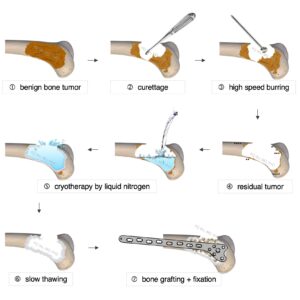Description
Familiarity with treatment
Breast implant removal with fat transfer is a procedure that involves removing breast implants and using the patient’s own fat to enhance the breasts. Here is an explanation of the procedure based on the search results:
Consultation and Evaluation: The process begins with a consultation with a qualified plastic surgeon. During this consultation, the surgeon will evaluate your medical history, perform a physical examination, and discuss your goals and expectations for the procedure. They will assess whether you are a suitable candidate for breast implant removal with fat transfer.
Preparation for Surgery: Prior to the procedure, you may be advised to discontinue certain medications or supplements that can increase the risk of bleeding. Your surgeon may also provide instructions on fasting before the surgery.
Anesthesia: Breast implant removal with fat transfer is typically performed under general anesthesia. This means you will be asleep and pain-free during the procedure.
Liposuction: The first step of the procedure involves liposuction, where excess fat is harvested from other areas of your body, such as the abdomen, thighs, or hips. The surgeon will make small incisions in the donor sites and use a thin tube called a cannula to suction out the fat.
Processing of Fat: The harvested fat is then processed to remove impurities and separate the healthy fat cells from other substances.
Fat Injection: Once the fat has been processed, the surgeon will inject it into the breasts using small, strategically placed incisions. The fat is carefully distributed to achieve the desired shape and volume.
Postoperative Care: After the procedure, you will be monitored in a recovery area until you are awake and stable. Your surgeon will provide specific postoperative care instructions, including wound care, pain management, and activity restrictions. Follow-up appointments will be scheduled to monitor your healing progress.
Who is it suitable for?
Breast implant removal with fat transfer may be suitable for individuals who meet certain criteria. Here are some points mentioned in the search results:
Desire for Natural Results: Fat transfer can be an appealing option for individuals who prefer a more natural alternative to silicone breast implants. It allows for breast enhancement using the patient’s own fat, which can help achieve a more natural look and feel.
Volume Restoration: Breast implant removal with fat transfer is often considered for individuals who desire volume restoration after implant removal. It can help compensate for the loss of breast volume that occurs when implants are removed.
Scarless Technique: In some cases, breast implant removal with simultaneous fat transfer can eliminate the need for additional breast lift surgery. This scarless technique may be suitable for individuals who want to avoid additional scarring.
Body Contouring: Fat transfer offers the additional benefit of body contouring through liposuction. Excess fat can be harvested from areas such as the abdomen, thighs, or hips, providing the opportunity for body sculpting along with breast enhancement.
Who is it not suitable for?
Based on the information from the search results, breast implant removal with fat transfer may not be suitable for everyone. Here are some points mentioned:
Limited Fat Availability: Individuals with little body fat may not be good candidates for fat transfer. Sufficient fat cells need to be available for harvesting and transfer. If there is not enough fat to achieve the desired results, alternative options such as breast implant replacement may be recommended.
Desire for Implant-like Results: Some individuals may have a specific aesthetic in mind that can be achieved with traditional breast implants. Fat transfer may not be able to replicate the same level of volume, shape, and projection that implants can provide. It’s important to have realistic expectations and discuss your desired outcome with a qualified plastic surgeon.
Need for Breast Lift or Reduction: In some cases, breast implant removal with fat transfer may be performed in conjunction with a breast lift or reduction surgery. This combination procedure can help address issues such as sagging or asymmetry. If you require significant reshaping or repositioning of the breasts, additional procedures may be necessary.
Conservative Goals: Fat transfer may be more suitable for individuals with conservative goals for breast enhancement. It may not be the ideal option for those seeking a significant increase in breast size or dramatic changes in breast shape.
Advantages
Based on the search results, here are some advantages of breast implant removal with fat transfer:
Natural Results: Fat transfer allows for a more natural look and feel compared to traditional breast implants. The use of the patient’s own fat helps to create a more natural contour and shape, resulting in breasts that feel more like natural breast tissue 1.
Dual Toning Procedure: One of the advantages of fat transfer is the ability to remove unwanted fat from other areas of the body, such as the thighs, waist, hips, or abdomen, through liposuction. This can result in body contouring and a more sculpted appearance in addition to breast enhancement 2.
Minimal Invasive Surgery: Breast implant removal with fat transfer is considered a less invasive procedure compared to traditional breast implant surgery. It involves smaller incisions and can be an ideal choice for individuals with mild sagging breasts (grade 1 ptosis). The recovery time may also be shorter compared to implant-based procedures 2.
Scarless Technique: In some cases, breast implant removal with fat transfer can eliminate the need for additional breast lift surgery. This scarless technique may be appealing to individuals who want to avoid additional scarring 3.
Use of Natural Body Fat: Fat transfer utilizes the patient’s own body fat, which eliminates the need for foreign substances or implants. This can be particularly appealing to individuals who have reservations about using synthetic implants 4.
Conservative Enhancement: Fat transfer may be a suitable option for individuals who desire more subtle changes or conservative enhancement. It can be used to make smaller changes and achieve a more natural-looking result 5.
Complications
Based on the search results, here are some potential complications associated with breast implant removal with fat transfer:
Limited Fat Availability: Individuals with very low body fat percentage may not have enough fat available for transfer. In such cases, fat transfer may not be a suitable option for breast enhancement.
Unevenness or Asymmetry: Achieving perfect symmetry with fat transfer can be challenging, and there is a risk of uneven distribution of the transferred fat. This can result in asymmetrical breasts.
Volume Retention: Not all of the transferred fat may survive in its new location. Some of the transferred fat cells may be reabsorbed by the body over time, which can lead to a decrease in volume. Additional fat transfer sessions may be required to achieve the desired outcome.
Infection: As with any surgical procedure, there is a risk of infection. It’s important to follow proper postoperative care instructions and maintain good hygiene to minimize the risk of infection.
Calcification or Oil Cysts: In rare cases, calcification or oil cysts may develop in the breast tissue after fat transfer. These can be detected through imaging tests and may require further evaluation or treatment.
Scar Tissue Formation: The removal of breast implants and the subsequent fat transfer procedure can lead to the formation of scar tissue. This scar tissue can potentially affect the shape and texture of the breasts.
Need for Additional Procedures: In some cases, additional procedures such as breast lift or revision surgery may be necessary to achieve the desired aesthetic outcome. This can increase the complexity of the overall treatment plan.
preoperative care
Based on the search results, here are some points related to the preoperative care of breast implant removal with fat transfer:
Consultation: The first step in the preoperative care process is to schedule a consultation with a qualified plastic surgeon. During this consultation, you will discuss your goals, medical history, and any concerns you may have. The surgeon will evaluate your suitability for the procedure and provide recommendations based on your individual circumstances.
Medical Evaluation: As part of the preoperative care, a thorough medical evaluation will be conducted. This may include a review of your medical history, physical examination, and possibly additional tests or imaging studies to assess your breast tissue and overall health.
Discussion of Expectations: It is important to have a clear understanding of what can be achieved with breast implant removal and fat transfer. Your surgeon will discuss the potential outcomes, limitations, and risks associated with the procedure. They will also address any concerns or questions you may have.
Review of Risks and Complications: Your surgeon will explain the potential risks and complications associated with breast implant removal with fat transfer. This will help you make an informed decision and understand the possible outcomes.
Preparation Instructions: Your surgeon will provide specific instructions to prepare for the surgery. This may include guidelines on fasting before the procedure, discontinuing certain medications or supplements that can increase the risk of bleeding, and arranging for someone to accompany you on the day of surgery.
Smoking and Alcohol Cessation: If you are a smoker, your surgeon may advise you to quit smoking before the procedure. Smoking can impair healing and increase the risk of complications. Similarly, reducing alcohol consumption is often recommended to optimize healing and minimize the risk of complications.
Follow Preoperative Guidelines: It is important to follow all preoperative guidelines provided by your surgeon. This may include avoiding certain foods or beverages, taking prescribed medications as instructed, and following any skincare or hygiene protocols.
Postoperative care
Based on the search results, here are some points related to the postoperative care of breast implant removal with fat transfer:
Recovery Period: After the surgery, you will need to allow yourself time to recover. The length of the recovery period may vary depending on individual factors and the extent of the procedure. Your surgeon will provide specific instructions on postoperative care and recovery.
Pain Management: You may experience some discomfort or pain after the surgery. Your surgeon may prescribe pain medication or recommend over-the-counter pain relievers to manage any discomfort. It’s important to follow the prescribed dosage and instructions for pain medication.
Compression Garments: Your surgeon may recommend wearing a compression garment or surgical bra to provide support and help reduce swelling. It’s important to follow the instructions regarding the duration and use of compression garments.
Activity Restrictions: Your surgeon will provide guidelines on activity restrictions during the recovery period. It’s important to avoid strenuous activities, heavy lifting, and exercise for the recommended period to allow for proper healing.
Follow-up Appointments: You will have scheduled follow-up appointments with your surgeon to monitor your progress and ensure proper healing. These appointments are important for assessing the results and addressing any concerns or questions you may have.
Monitoring for Complications: It’s important to monitor for any signs of complications such as infection, excessive swelling, or changes in breast appearance. If you notice any unusual symptoms or have concerns, it’s important to contact your surgeon promptly.
Long-Term Care: Once you have recovered from the surgery, no additional care or maintenance is typically needed for the fat transfer. Unlike breast implants that may require removal or replacement, fat transfer offers long-lasting results without the need for additional surgery 1.



Reviews
There are no reviews yet.